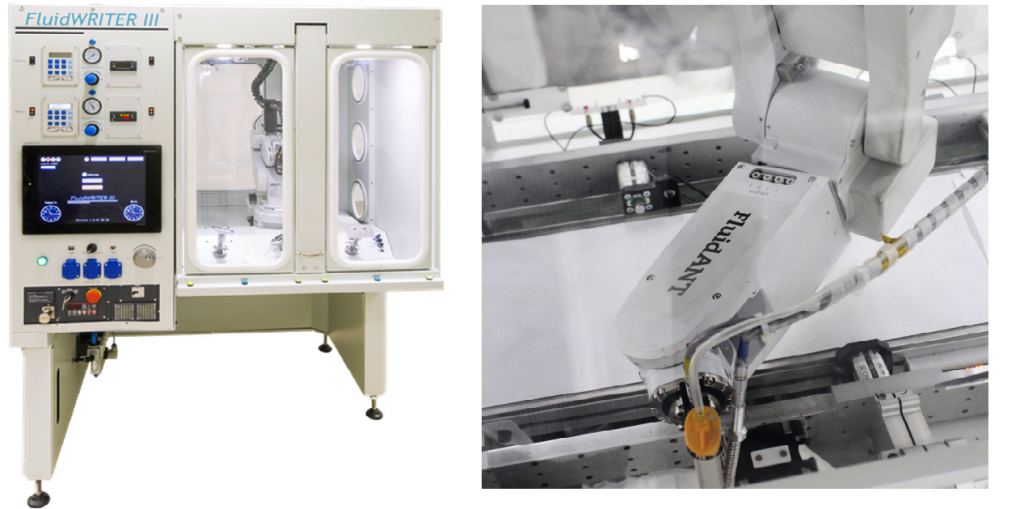 As I am certain you are well aware, smaller is usually better when it comes to portable electronics. Whether it’s an iPod Nano, or smartphones approaching the thickness of credit cards, when it comes to electronics that we use on the go, there seems to be a never ending battle between manufacturers to cram more components into a smaller and smaller case. This is especially true within the smartphone industry where consumers demand phones with an ever expanding list of features, yet don’t want to be holding a brick-sized object in their hands.
As I am certain you are well aware, smaller is usually better when it comes to portable electronics. Whether it’s an iPod Nano, or smartphones approaching the thickness of credit cards, when it comes to electronics that we use on the go, there seems to be a never ending battle between manufacturers to cram more components into a smaller and smaller case. This is especially true within the smartphone industry where consumers demand phones with an ever expanding list of features, yet don’t want to be holding a brick-sized object in their hands.
Probably the most important component for any smartphone is its antenna. The antenna market for smartphones, routers and other consumer electronics is estimated to be worth over $8 billion annually, and with the Internet of Things about to take over our lives, according to industry experts, this market will only continue its rapid expansion.
One company headquartered in San Diego, California, called Pulse Electronics, is trying to change the way antennas are manufactured within these tiny gadgets. They’ve recently unveiled their FluidANT line of products which includes a printer they call the FluidWRITER that’s capable of printing antennas on three-dimensional objects themselves.
Typically manufacturers utilize a process called Laser Direct Structuring (LDS) when they seek to integrate an antenna directly onto a device. Other techniques such as foil stamping or the use of flexible substrates are also commonly used, but have their downfall, particularly in that the substrates which can be used are typically very brittle as well as expensive.
The FluidWRITER, however, uses a 6-axis robotic arm, and also has a two additional rotational axes so that it can move around a particular object to print antennas using an inkjet system. The ink consists of micron-sized silver particles which can be sprayed onto much cheaper materials, while still using an LDS process. Substrates such as polycarbonates, polyamide and ABS are all able to be printed on using the silver ink which prints layers that are 25 microns deep and 400 microns wide. Once the antennas are printed, the ink has to cure at approximately 100° to 110° C prior to use. The antennas are able to be printed at a rate of one every 6-8 seconds and the company has  already used this process to print over 2 million antennas thus far. Below you will find some of the features of the FluidWRITER machine:
already used this process to print over 2 million antennas thus far. Below you will find some of the features of the FluidWRITER machine:
- Piezo-actuated printhead for high-precision dispensing
- Monitor print status in real time
- Automated loading windows for safety and easy access to fixtures
- Cooling system for the valve unit
- Heating system for the nozzle
- Pressure control for the syringe back pressure
- 15” HMI touch screen interface
- Simplistic user interface
- Adjustment capabilities for tools and fixtures is a breeze
- Automatic nozzle cleaning
As for the dimensions of the machine, it measures 1280 x 1230 x 1700 mm and weighs approximately 830kg. It can print at speeds of up to 50mm per second and has a build envelope of 200 x 250 x 150 mm.
The system works perfectly with the company’s FluidPATH tailor-made CADCAM software, allowing for print simulations, and intuitive tools for designing conductive traces and antennas. While the company is using the machines to manufacture antennas themselves, they also offer the FluidWRITER to other manufacturers for around $160,000 per machine.
While for now they are concentrating on printing antennas onto 3D surfaces, the company is said to be working on developing processes for printing other conductive elements as well. Could this machine change the availability and cost of integrated antennas and perhaps other tiny electronics? Let us know your thoughts on this new system in the FluidWRITER forum thread on 3DPB.com.
Subscribe to Our Email Newsletter
Stay up-to-date on all the latest news from the 3D printing industry and receive information and offers from third party vendors.
Print Services
Upload your 3D Models and get them printed quickly and efficiently.
You May Also Like
3D Printing News Briefs, July 2, 2025: Copper Alloys, Defense Manufacturing, & More
We’re starting off with metals in today’s 3D Printing News Briefs, as Farsoon has unveiled a large-scale AM solution for copper alloys, and Meltio used its wire-laser metal solution to...
3DPOD 260: John Hart on VulcanForms, MIT, Desktop Metal and More
John Hart is a Professor at MIT; he´s also the director of the Laboratory for Manufacturing and Productivity as well as the director of the Center for Advanced Production Technologies....
3D Printing News Briefs, June 28, 2025: Defense Accelerator, Surgical Models, & More
In this weekend’s 3D Printing News Briefs, 3YOURMIND was selected to join an EU Defense Accelerator, and PTC has announced model-based definition (MBD) capabilities within Onshape. Finally, a study out...
EOS in India: AM’s Rising Star
EOS is doubling down on India. With a growing base of aerospace startups, new government policies, and a massive engineering workforce, India is quickly becoming one of the most important...


































